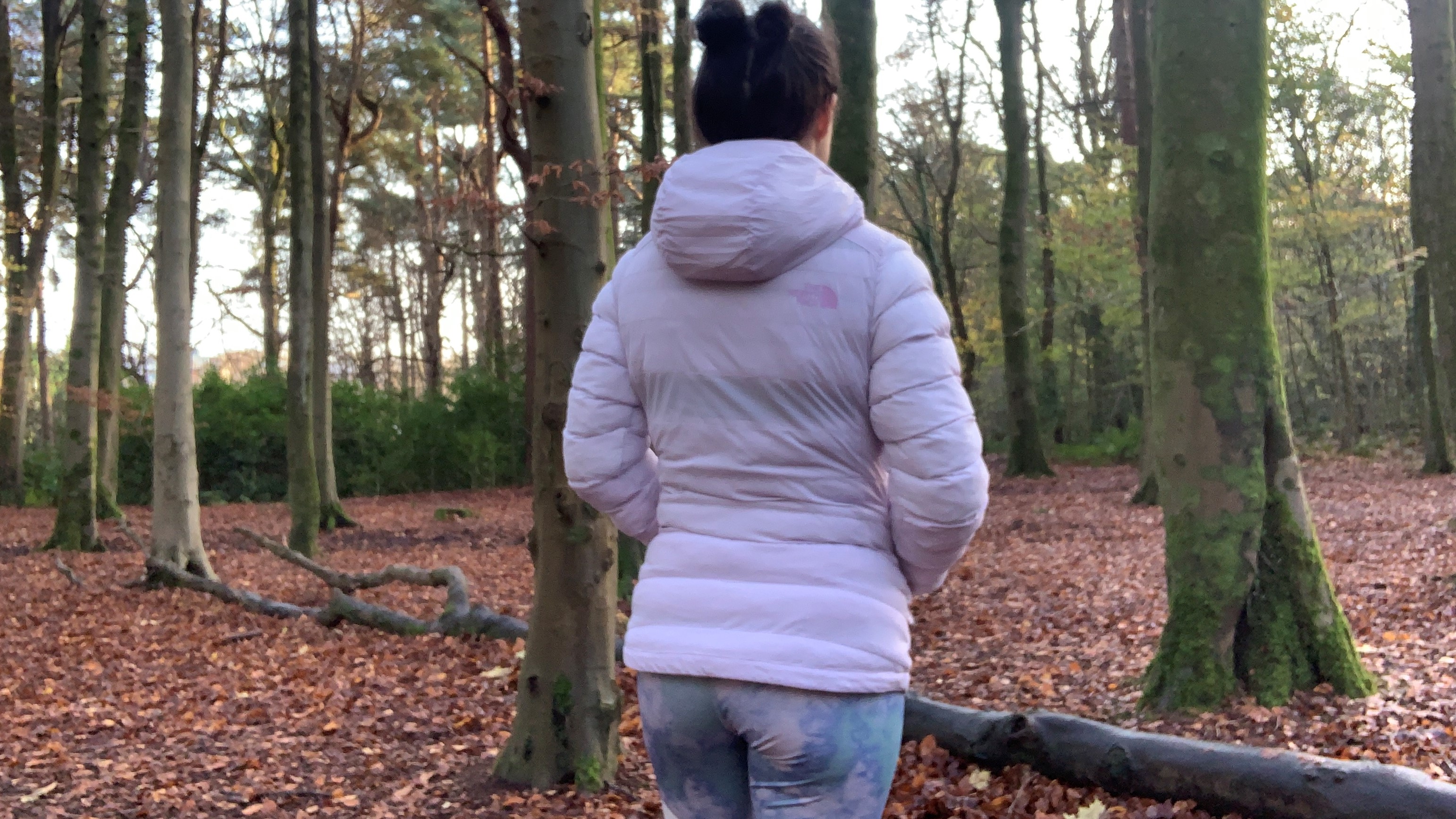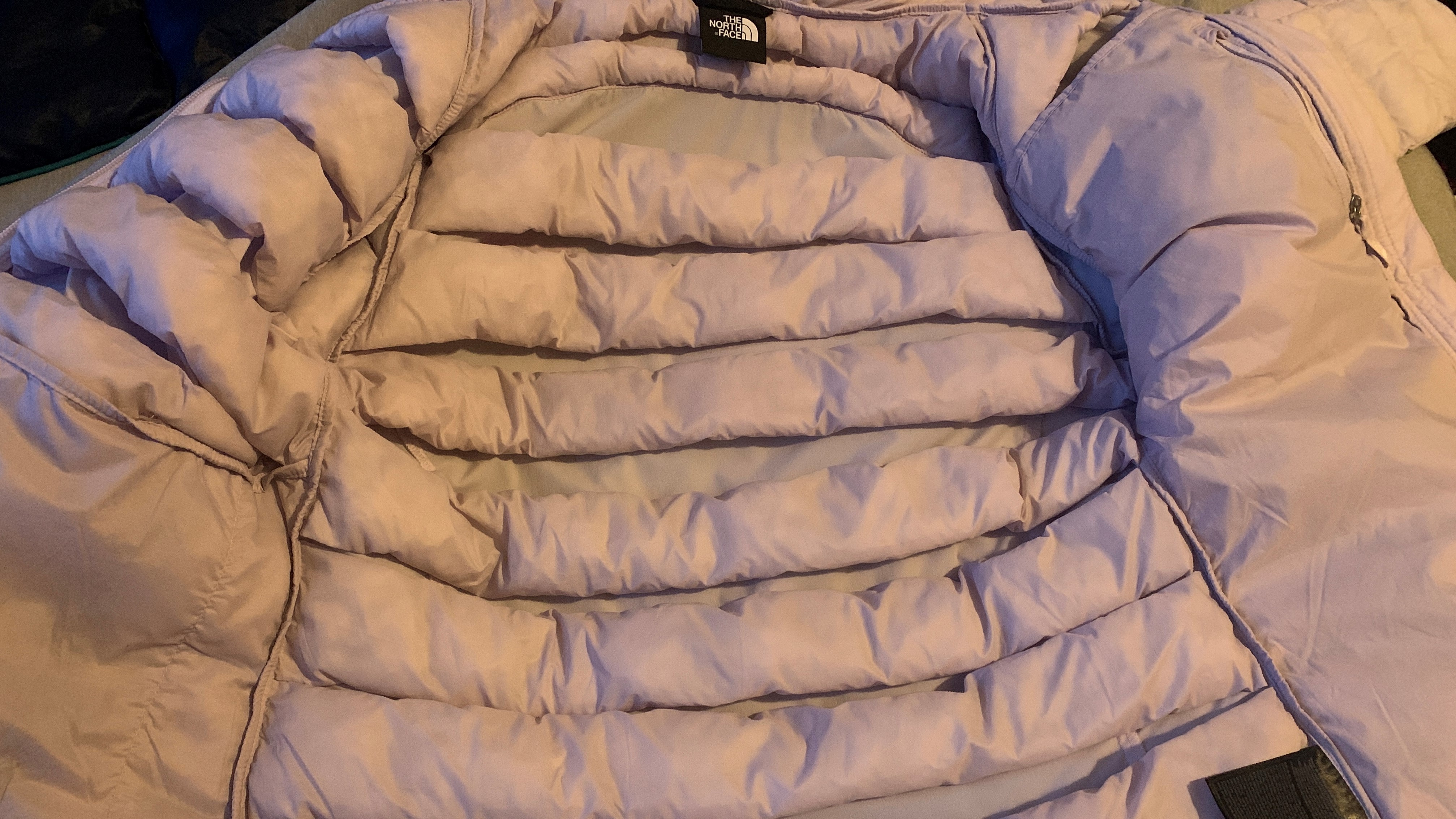Advnture Verdict
Outstanding airflow and an eco-friendly design makes this lightweight puffer jacket an excellent choice for when you need extra insulation on cold uphills
Pros
- +
Ultra breathable
- +
Mostly recycled materials
- +
Lightweight but cozy
- +
Slim fit leaves room to layer underneath
- +
Lots of pockets
- +
Stays warm when wet
Cons
- -
Not warm enough for hanging out on frigid days
- -
Pricey
You can trust Advnture
The North Face Thermoball 50/50 Jacket: first impressions
The North Face Thermoball 50/50 Jacket is a puffer jacket is designed for those of us who want to keep moving when it gets really cold out. It’s packed with ultra-warm recycled ThermoBall Eco synthetic insulation, which might make it sound like it would be too warm for working up a sweat in, but the 50/50 baffle construction paired with an air-permeable outer fabric means warm air and moisture can easily escape. This lightweight jacket packs up into its left pocket making it great to stuff into your backpack on milder days.
• List price: $350 / £315
• Unisex: Men’s and women’s sizing available
• Sizes: Men’s: S - XXXL; Women’s: XS - XXL
• Weight: 1lb / 450g (women’s S)
• Materials: 89% Recycled Nylon, 11% Elastane, ThermoBall™ Eco–100% Post-Consumer Recycled Polyester
• Colors: Black, Lavender fog, Lapis blue, Shady blue, Cordovan/red
• Best use: hiking, ski touring
A slim fit looks good but leaves enough room for you to layer a base layer and a fleece jacket underneath, while stretchy cuffs fit easily over hiking gloves and an adjustable hem seals out any cold drafts. A binding on the hood means it stays up on a gusty day and chin zip guard means you can zip it all the way up to your mouth without any annoying rubbing. Two hand pockets and two inner pockets leave loads of storage for your gloves, phone and keys. Though it’s so breathable that it might get chilly if you’re just hanging around in a cold wind, you’ll never need to unzip if you’re hiking or ski touring wearing this on a cold day. It’s pricey, but promising for cold adventures and looks good enough to wear around town, too.
The North Face Thermoball 50/50 Jacket: in the field

This jacket couldn’t have arrived at a better time, what with an early and frigid cold snap going on here in Scotland. I tend to want to be toasty when I’m hiking in winter, but my thicker down North Face jacket is often a step too far. The baffled construction and Thermoball insulation mean this jacket is impressively breathable and I’ve worn it over a wool base layer and fleece on a couple of very cold hikes lately without having to so much unzip even on the steepest of slopes.
Here’s how it performed:
Fit and comfort
I’m pretty much a women’s small in everything and found the small here to be a perfect fit. It’s slim, which I like, but there’s room to wear it over a base layer and mid layer, comfortably. It looks nice for wearing it around town too, and it’s super snug and cozy, especially compared to my other Thermoball puffer.
Warmth and breathability
I’ve been on a couple of below-freezing hikes lately wearing this jacket and I definitely enjoyed the warmth. On less extreme days, it’s been great for heading to the trail when it’s just a little chilly.
That said, it’s the breathability that’s really the most impressive thing about it. From the outside, it looks like a normal puffer but when you look at the inside, the insulation is packed in layers with gaps in between which, when combined with the air-permeable shell means that air can really freely pass through it. I wore it up Dumgoyne last week, which isn’t a long hike at all, but it’s about as steep as they get. I was moving fast and though I was plenty warm, I never got sweaty or felt uncomfortable.
All the latest inspiration, tips and guides to help you plan your next Advnture!
This isn’t a downside, but it I should note that air can pass through it in both directions, meaning that if you just wanted something to hang out in on a cold, windy day, you might want to wear a more robust down jacket, but for hiking in the cold, or hanging out in cool weather, it’s perfect.

Weight and packability
At just 1lb for the women’s small version, this one is as light as the lightest down jackets we've tested and for such a plush, cozy jacket, it’s reasonably packable. It’s designed to stuff into its own inner pocket which doesn’t make it tiny, but perhaps the size of an average butternut squash? You could easily fit it into a daypack anyway, however since it’s so breathable, chances are you’ll just wear it.
Value and durability
It’s certainly on the higher end of puffer jackets when you get down to brass tax, but there’s nothing flimsy about this one, and for the extra money you get the peace of mind of knowing this jacket has great eco credentials. Plus, the street-friendly style means you’ll wear it everywhere to get your money’s worth.
Julia Clarke is a staff writer for Advnture.com and the author of the book Restorative Yoga for Beginners. She loves to explore mountains on foot, bike, skis and belay and then recover on the the yoga mat. Julia graduated with a degree in journalism in 2004 and spent eight years working as a radio presenter in Kansas City, Vermont, Boston and New York City before discovering the joys of the Rocky Mountains. She then detoured west to Colorado and enjoyed 11 years teaching yoga in Vail before returning to her hometown of Glasgow, Scotland in 2020 to focus on family and writing.


